There are hundreds of gadgets, gizmos, and products available on the market designed to help you to stay “undetectable” and beat an animal’s nose. While some of these products can help you reduce your scent, they are far from a magic-bullet solution to killing a buck, bull, or any big critter that lives or dies by its nose. To be a successful hunter, you need to learn how to read wind and thermals.
Understanding how both work their way through the landscape will most definitely give you more of an advantage than any product you can buy. Attempt to figure out how these animals use the wind to their advantage and create a game plan accordingly; that’s the approach I’ve taken over the years, and it’s worked well.
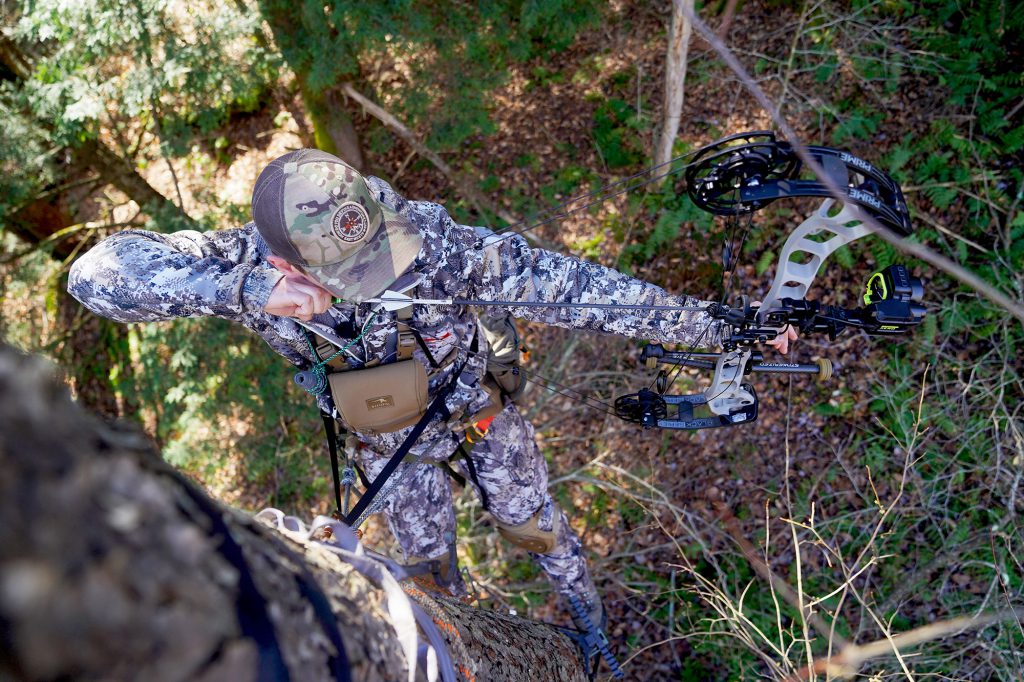
Learning To Read the Wind
Wind is defined as the natural movement of air that is coming from a particular direction. This definition seems pretty straightforward and is what your favorite weather app will display.
But wind is manipulated by terrain, objects, speed, temperature, pressure, weather shifts, and other factors. In other words, just looking at the Weather Channel’s prediction is not going to be a foolproof approach.
In fact, wind flows like a river: you can have swirls, eddies, curls, and wind can move around objects just like water does. But, you can also read wind just like your can a river — it just takes a little know-how.
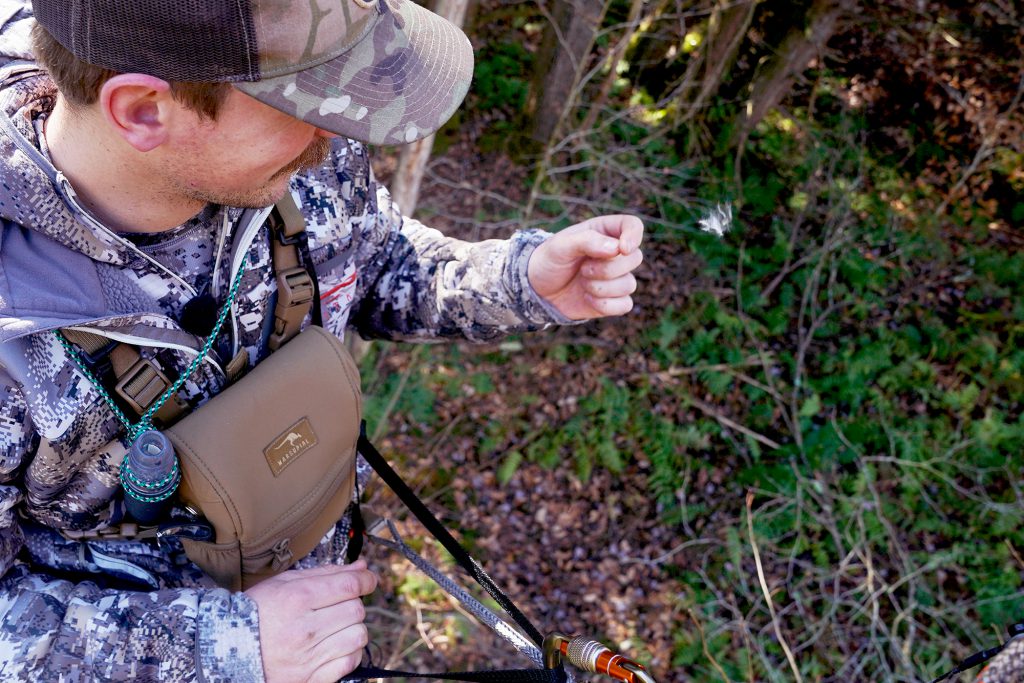
How Thermals and Wind Interact
Most people understand basic wind direction, but many hunters are unaware of the effects of thermals and how they play a role in overall wind movement.
Thermals are simply the rising and falling of air particles caused by the uneven heating of the earth’s surface from solar radiation.
Wind and thermals play a role in all hunting in all parts of the country, but it’s more exaggerated in the mountains, where you simply must understand thermals to hunt effectively.
Thermals occur more in areas with terrain of varying elevations where temperatures can fluctuate throughout the day. Warmer air is less dense than cool air, which results in the warm air rising. The rule of thumb is that thermals will rise in the morning as the sun heats up the hillside, and they will fall in the evening when the sun goes down. That said, it’s just a rule of thumb.
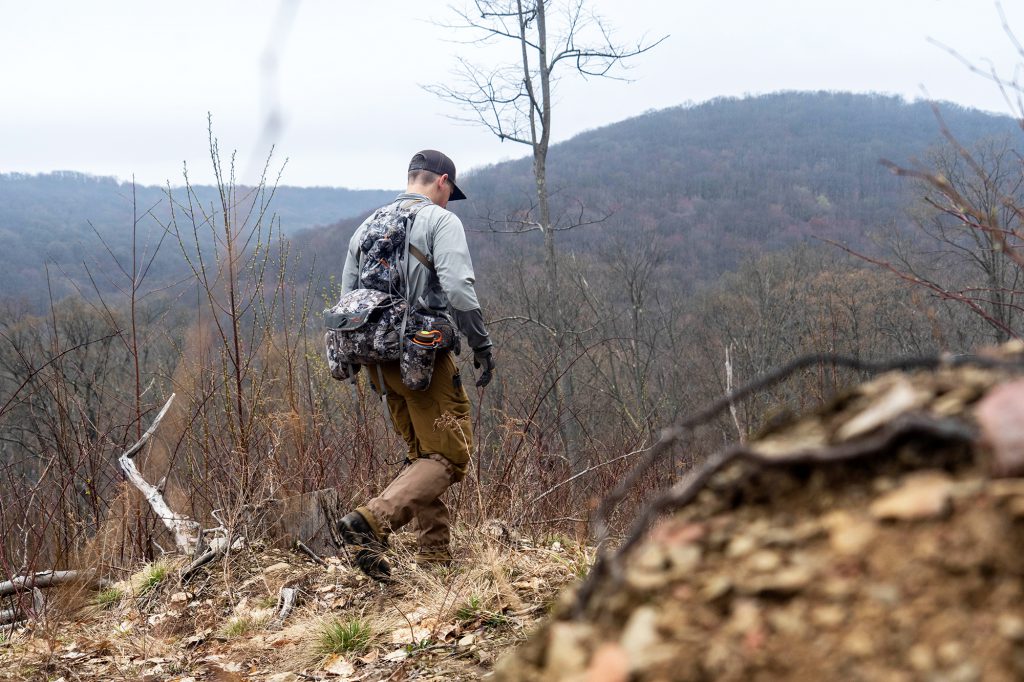
Many factors govern thermals, and those factors will be slightly different depending on location and land features, so it’s important to understand these basic concepts and scenarios:
- Sunny areas will be warmer than shaded areas causing upward thermals.
- Cloud cover and storms rolling in can cause downward thermals.
- Areas around running water are typically cooler causing thermals to pull in the direction of the water.
- Stagnant water such as beaver ponds will stay warmer than the surrounding air when the ambient air temperature drops below freezing, which leads to consistent upward thermal drafts.
- Heavy thermal cover areas (hemlocks and pine trees) hold heat when it’s cold and stay cooler when it’s warmer outside.
- Openings in the timber get more sunlight creating uphill thermals in calm conditions.
- Trees, large rocks, and other obstructions can influence air currents.
Using This to Find Game
I find whitetail bedding and travel in hill country is dependent on the wind. They like to bed at the crest of hills with the wind to their back where they have a good view out in front and below them. Why are the places right on the edges of steep drop-offs good for buck bedding? Because they get the advantage of the wind direction and the advantage of uphill thermals as the sun heats up the hillside during the day.
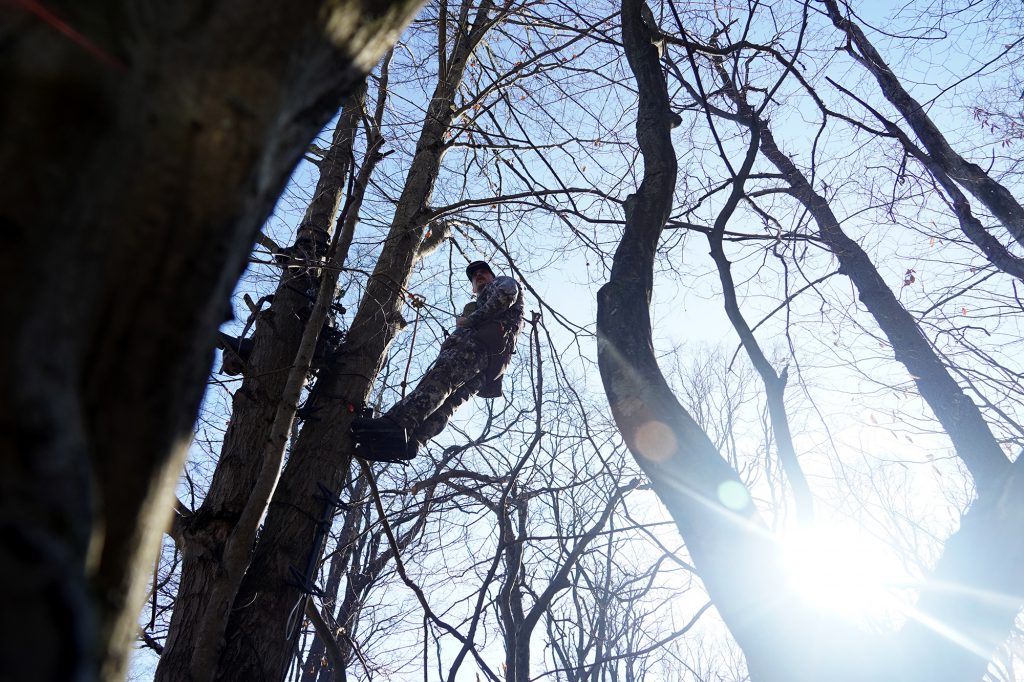
The wind coming from the bottom and the top will collide and swirl, giving them the ultimate advantage in these locations. Many times, bucks in areas like this will travel along that same topography line around the mountain, which allows them to take advantage of these winds when they leave their bed to go feed or look for a doe.
Does are different. I rarely see whitetail does respond and move with the wind because they are typically in groups and have the added security in numbers. Keep in mind that the prevailing winds in most mid-latitude climates that we find in North America are westerly winds, meaning most of the time, they are blowing from west to east.
To Read Wind, First Map Wind
When I am scouting a new area on the map, I will try to “map the wind” and predict how it will flow in and out of the valleys. I log into my Spartan Forge app and use the topography to predict how the wind will flow based on the terrain, running water, potential obstacles, sun positioning, and more. This is also how I go about aerial scouting for potential buck bedding locations and travel routes.
This excellent article by Chad Sylvester of Exodus Outdoor Gear on wind mapping can provide you with more detailed information.
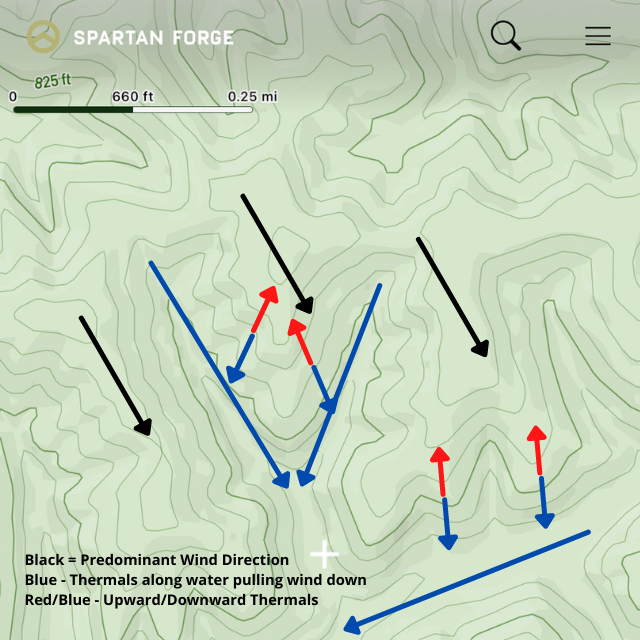
There’s no better way to understand the winds and thermals for your hunting area than to spend time there and observing how things flow.
Carrying a wind indicator of some sort, and checking it often, will help you understand the flow and improve your recognition of similar scenarios in other places. I like using milkweed rather than a puff bottle because the milkweed will stay in the air much longer, and that makes it easier to see the different wind drafts as it floats away from you.
I will check the wind and note the conditions in different vegetation types, terrain, and elevation. Documenting your findings will help you remember what you’ve found and learn from it. I am a big believer in documenting the winds along with other pertinent weather data for future reference.
Use Wind Indicators With Trail Cams
I learned a great tactic from Troy Pottenger, a friend and an extremely successful deer hunter from Idaho: Hang a wind direction indicator in front of your trail camera. You can use a ribbon or something else that’s lightweight and visible enough that it will show the wind direction even with a slight breeze. When you look at your pictures of that giant buck you’re chasing in daylight, you can see what the wind direction was at that exact moment. It’s pretty tough to get better information than that!
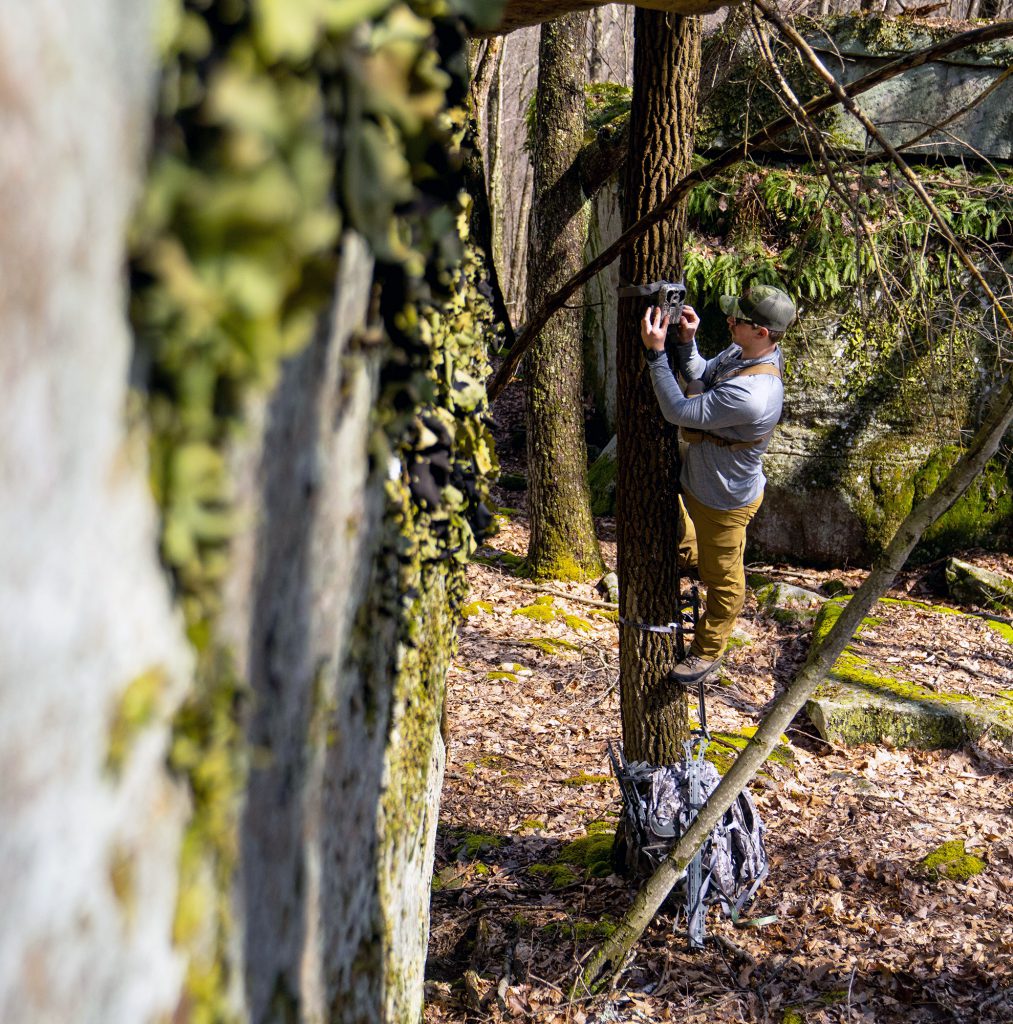
There are hundreds of different examples and scenarios that could play out during a hunt. It can be difficult to give definitive answers about what the wind and thermals will be doing in your area because of the many variables involved. But spending time in the field and purposefully thinking about it can have a huge impact on your strategy and your ability to predict wind movement in other areas.
As with anything in hunting, having a solid base knowledge and using your woodsmanship in the field will pay dividends, teach lessons, and ultimately increase your success over time. Foundational to all of this is knowing how to read wind.
Read Next: More stories from East Meets West’s Beau Martonik.

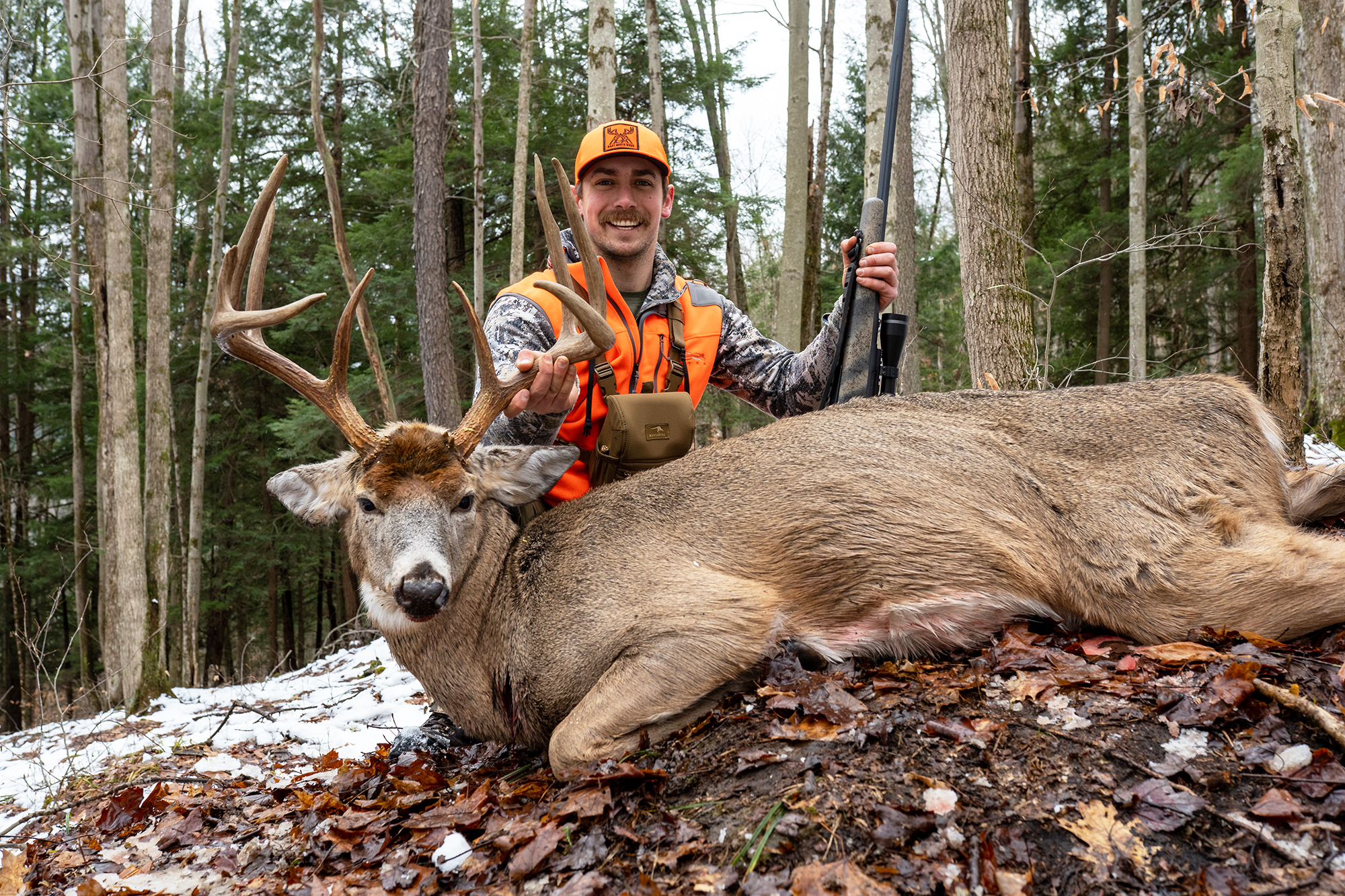
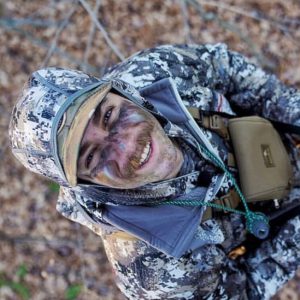





Comments